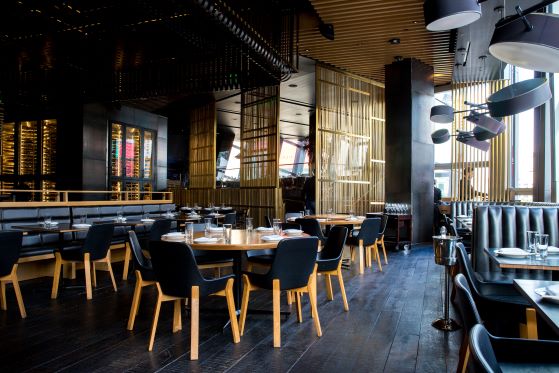Eight Unavoidable Costs in the Restaurant Industry

When it comes to running a restaurant, there are a few aspects anyone can look forward to. There will be slow Tuesday nights and more than a few broken plates—especially if you’re a Greek taverna. But, in reality, there are many costs that are simply unavoidable in the restaurant business. What are some of these costs exactly?
Eight nearly unavoidable costs when doing business in the service industry include rent, business insurance, payroll, POS systems, consequences of theft, replacing kitchen equipment, and marketing expenses. Which of these expenditures is highest for any individual restaurant will rely on many factors such as location and business type.
And while knowing these costs alone won’t be enough, it can help some restaurants find valuable silver linings in otherwise sunk costs. That’s why we’ve compiled the following list to help anyone learn more about eight unavoidable restaurant industry costs and how they can think about each more strategically.
Rent
If there is one fixed cost that will likely keep a restauranter up staring at the ceiling at night, it is how they will cover their rent. In desirable locations, a restaurant’s chief cost is rent. To help make sure that rent is sustainable, most restaurants should shoot to pay no more than 10% of their sales in rent annually.
Luckily, most landlords are as invested in the success of their tenants as the businesses are themselves. (Just don’t expect them to lower rent payments if they have no contractual reason to do so.) And in the end, it is hard to run a restaurant without a kitchen and physical space to welcome guests into—be sure to get the rent paid on time.
Business Insurance
No upstart restaurant should overlook the importance of fully understanding their insurance expenses. For example, many different factors can combine into a particular establishment’s restaurant insurance cost. Aspects such as the restaurant’s location, number of employees, policy limits, and claim history can all make a difference. And any restaurant will want to understand better how coverage such as commercial property, worker’s compensation, and general liability can be rolled into a single policy to help proprietors save money.
Some business owners may overlook the price of insurance, especially in the service industry. As a result, many pay little attention to insurance, even considering it just another monthly fee they must pay to stay in business. Such a view, however, is short-sighted. Quality insurance can help protect an entrepreneur’s investment in the industry and keep a restaurant going in times of adversity. But the price of insurance is rarely set in stone and can change quickly based on the factors above. This volatility is why it is always best to get quotes from multiple providers to see which coverage and price best suit the café’s requirements.
Communication Tools
In the modern era, communication tools are essential for any restaurant. This includes everything from a website to social media accounts and booking systems. These tools help promote the establishment, take reservations, and facilitate direct communication with customers. However, these tools can be costly as well. Therefore, restaurant owners should consider their target audience and choose the most effective channels of communication. Using an innovative restaurant pager system is one of the best ways to keep waiters, chefs, and managers in constant communication, increasing efficiency and customer satisfaction. Not only does it save time, but it also cuts costs in the long run. You may also want to consider investing in a good customer relationship management (CRM) tool to better engage with customers and keep track of their preferences.
Employees
A good staff is the lifeblood of any establishment. After all, who wouldn’t want to frequent a local haunt where everybody knows their name? But, even more so, the dishes in the back won’t wash themselves. (As many restauranteurs will report, paying someone to wash those dishes can almost be such a regulatory hassle that they may want to do it themselves.)
Still, good help will always be hard to find, and it is always much more expensive to cyclically find and train new staff. So training alone, before payroll, is one reason why employees will always be one of the costliest aspects of running a restaurant.
Raw Materials
Ingredients will always be one of the price inputs to which a bistro will be most sensitive. This sensitivity is due to the fact that pricier ingredients mean dishes will be more expensive to make, and business owners can only eat into their margin so much before having to raise prices. When this happens, customers tend to notice. Therefore, going against this trend can lead to a competitive advantage. However, how long a business will be able to sustain this is largely unknown.
POS Systems
There are many reasons why a sound POS system is worth its weight in gold. The best ones will be easy to use and train employees on, yet versatile enough to be able to provide rich data for proprieties. There are several well-known POS providers, some of the industry leaders being Toast, TouchBistro, Vend, and Block (formerly known as Square).
Pilfering
In some industries, workplace-related theft is referred to as shrinkage. And as much as everyone would like to believe that it won’t be an issue, pilfering will likely come up in many restaurants’ environments. Luckily, there are a few ways to combat pilfering.
First, don’t let your guard down regarding pricey items such as wine or liquor. Keep them away from customers or employees that may be looking for a five-finger discount. Second, keep track of inventory so that a few stray bottles of beer or a rack of lamb alerts when they go missing.
Lastly, don’t preclude anyone from suspicion if things start to go missing, including ownership. As much as we all would like to trust our business partners, it has been shown that some owners and managers have no qualms over pilfering from their businesses.
Kitchen Equipment
Kitchen supply stores can stay in business for a reason. However, even if you buy high-quality cooking implements and take care of them well, you’ll likely find yourself replacing worn-out items more often than not. This constant churn of kitchen equipment in most professional kitchens puts enormous stress on the tools of their trade. For this reason, any restaurant should be sure to budget for repairs and replacements for kitchen tools, appliances, and gadgets.
Marketing
Finally, there is the (almost inevitable) expense of marketing. Every restauranter dreams of their place being the sort of overnight success that spreads so virally via word of mouth that there is a line out the door for a table after opening night. And while some lucky establishments can book up months ahead of time, 99% of restaurants won’t be so fortunate.
For the mere dining mortals, a good marketing plan can help bring customers in that will keep a business healthy and help spread the good word the restaurant’s good deeds. Social media ads can be a good place to start, as can making sure your website is properly optimized for search engines. A marketing professional can help get your business on the right track if you have no idea where to start.


